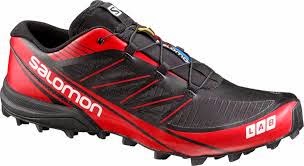My Shoes of Choice
Almost daily, there are posts on various Facebook OCR pages (Corn-Fed Spartans, SISU, Death Race, among others) about shoes. What type of shoe works best for this or that; how does this shoe handle mud or drainage; what's affordable and comfortable; the questions go on and on. It makes sense really--nothing is more important in racing than the survival and maintenance of your feet (check out my previous blog on feet and socks). I've broken down some points to think about and what shoes I prefer in the world of OCR and extreme endurance races.
Cost
We all have a budget. I tend to spend way more on shoes than I do on anything else, mostly because I love shoes, but also because I tend to go through shoes rather quickly. This is a little problematic because my all time favorite shoes are Salomon shoes and they tend to be on the pricey side. While the positive side is I have an ambassadorship from them, reducing the cost significantly, that certainly doesn't help you out very much. What I did before I got my ambassadorship was have a good training pair of shoes and a good pair of racing shoes. I trained in two pairs of shoes: the Sense Mantra two (my favorite road-to-trail shoe) and the Speedcross 3 (pictured below).
You can find this shoe currently on Amazon between $73-$130 based on size and color selection. The Sense Mantra 2 runs around $65 with a little internet digging. For a Salomon shoe, that's a great deal.
My racing shoes aren't cheep, but like a fine Italian sports car, you only bust these out when it is time to impress (terrible analogy but you get the point). I have two shoes that I live by: the Fellcross 3 and the S-lab Sense Ultra (both pictured below).
 |
| Sense Ultra |
 |
| Fellcross |
Amazon has these running around $160-$170, which is pretty consistent everywhere. You won't find good deals on these because they are from the S-Lab section of Salomon, meaning, fancy fabrics and excellent materials.
What's so great about these shoes?
Everything. The grip, the drainage, the comfort, the style, weight, are top flight when it comes to the S-lab stuff. Sometimes you have to bite the bullet when it comes to quality. If you are serious about your craft, you best be serious with your wallet.
Cons?
Besides cost, not a lot. I found that the Fellcross became waterlogged overtime, but that was the Fellcross 2. Granted, I put these through many Spartan races, a winter's worth of trail races, a 24 hour race called Legend of the Death Race, and was one of my shoes for the Ultimate Suck. I was waterlogged after all of this! The shoe's exterior didn't break down at all, which shows how tough these shoes are. The new model promotes that they don't get water logged. Not sure if this is true considering I haven't abused them that much yet, but if they do become logged, I will report it out. The Speedcross is a little bulky, but again, this is my training shoe so it doesn't bother me that much. Overall though, they all rock.
Shoes for Indoor and Weight Lifting
I will say that besides Salomon, I really like Inov8 shoes. They are less expensive, but still have a good quality. I tend to use them in weight lifting most though because they are so low to the ground. You don't want a big heel to toe drop in a weight lifting shoe. I use the F-lite 195. It's a bit of a cross-training shoe as well as a weight lifting shoe. It works well for quick transitions from lifting to small distance running. I would keep the running to under a mile in intervals though. You will feel it running in these after a while. Amazon has them running between $65 and $120.







